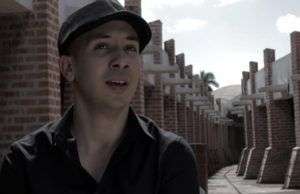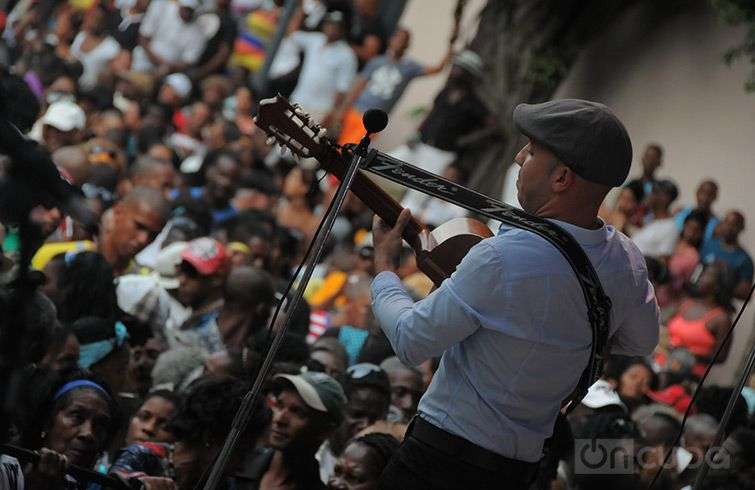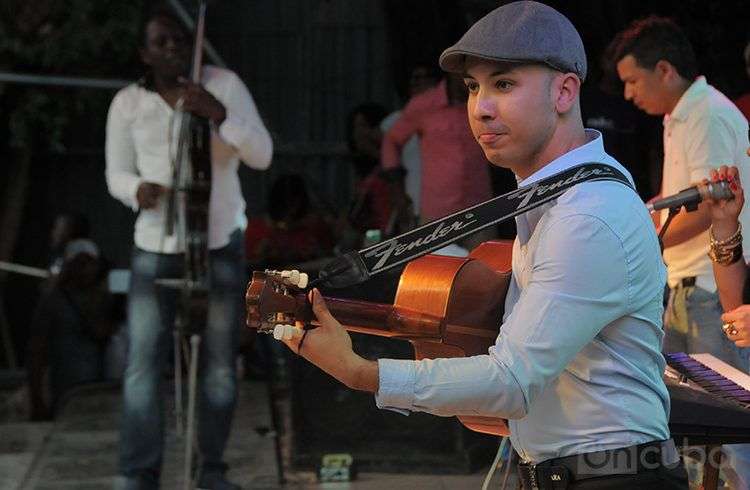“An album is the pinnacle of an artist’s work and should be transparent. The public, if they perceived that way, makes it theirs, “says René Avich, who has decided to share the details of his participation in the Jóvenes treseros de Cuba CD , his first album.
Out as a result of his prize in a son contest sponsored by the International Fair Cubadisco 2011, the CD contains eight songs by Renesito, and equal amount by César Hechavarría and San Miguel Pérez, all winners of that event.
The album was released this year and has already won the highest honor of the Cubadisco 2014, in the category of Traditional Folk Music.
But let´s René, a debtor of musicians like Miguel Matamoros, Pancho Amat and Juan Formell, present a work he considers that describes him melodically, since he admires each area of popular music and is respectful of all its codes.
” Jóvenes treseros de Cuba contains my career so far. There are in it eight pieces performed by me, six of them written by me. I started composing at the age of 16, something I improved with my studies at the Higher Institute of Art (ISA).
“One of my first songs was De Santiago a La Habana. I find it very special because in it I put all my feelings from when I arrived in the capital. My hometown, Santiago de Cuba, is rich in sonorities. There were born processes important to our culture; however there is not an intense artistic life, something that Havana does have with its film, theater and jazz festivals. So this is a song that shows that mixture with contemporary beat and sonorities that I found here. ”
https://www.youtube.com/watch?v=UYTsO_jkW6E?rel=0
Can it be that song also a reflection of the trip that son made in the 1920s to the West?
It is that journey, although there are other songs on the album reflect that transition. With my friends and I start using other sound media, such as piano and flute; and I give it a sound rather charanga. Because that just happened to the son when arrived in Havana, met with other formats, other influences came from France, such as charangas, as popular as the Aragon.
Because you’re a fan of this whole process that unfolded in Cuba, especially in the twentieth century.
I still consider myself a great ignorant of the richness of Cuban music. I always say we have to study hard. We do Beethoven and Mozart and we have to do it with our sound. There are many unknown areas and yes, I am an admirer of all our formats and beats. We have much to recreate with these tunes already out there and sounds incredible.
What other topics would connect you to the wonder of the sound in other parts of the island?
El guararey de Pastora is very unique in the disk. When I made my version I was 16 and precisely represent my search for a genre like changüí, which I confess I was very scared because it is very syncopated. Today I recognize that Guantanamo people are very conservative with this style, so it survives.
 “I have performed the guararey in contests, and this album is played with tres and Flemish box, wherein the mixture of our roots is appreciated. Then I was joined by percussionist David Hernandez.
“I have performed the guararey in contests, and this album is played with tres and Flemish box, wherein the mixture of our roots is appreciated. Then I was joined by percussionist David Hernandez.
“There is another version on the CD: La tarde, by Sindo Garay, for me one of the greats of Cuban music. Many say that he was influenced by classics of the Western music and I believe so. But more than that, he was a genius of our island.
“The harmony of Sindo leads you through aesthetically beautiful roads and La tarde came to me through Pablo Milanes with his album Años. I decided to do it for guitar and tres. ”
There are other songs that are connected with the movement of the old trova in Santiago, why do not we talk about it?
When I do versions I turn them into compositions. I make fantasies of those songs, with all due respect to the authors. It happened to me with La mujer de Antonio, by Miguel Matamoros. Hence came Cerquita de la mujer de Antonio, which I conceived for tres only, but enlarged it for septet format in the disk, with outstanding participation of singer Eduardo Sosa and Abel Virelles on trumpet. Matamoros, as I said before, is part of my music and La mujer de Antonio is a very familiar theme.
After Jóvenes treseros de Cuba, do you have other projects?
I intend to promote one of the tres as one of the sounds that identifies Cuba worldwide. In my next album that purpose will be visible. I will keep making people falling in love with all its peculiar sound, forming assemblies with other beats and formats not as well known to adorn our most Cuban essence, is also part of the meaning of that next album, with other added values of our musical spectrum. I don’t want to reveal guests yet, but, of course, they will be good.
Revealing an outstanding tres player
 It was the International Fair Cubadisco 2011 which put into the orbit of the Cuban music scene young tres player René Avich Wanton. Piano, singing and tres: There, precisely because of the efforts of the organizers of the event, a unique competition in which it sought a son player.
It was the International Fair Cubadisco 2011 which put into the orbit of the Cuban music scene young tres player René Avich Wanton. Piano, singing and tres: There, precisely because of the efforts of the organizers of the event, a unique competition in which it sought a son player.
Renesito won with two other instrumentalists César Hechavarría and San Miguel Pérez. This initiated perfect opportunities to Avich, who graduated from the Higher Institute of Arts (ISA) in 2012.
That competition also led the artist, born in Santiago de Cuba in 1989, to have a legendary band like Reeve have him in its staff.
Still considered a new artist in Cuban scenarios, René Avich surprises by his particular way of playing the tres and his desire to take his sound to every corner of the planet, because on that trip he will be able to draw an intense Cuba throbbing between the strings of the instrument.
https://www.youtube.com/watch?v=9MPNOEInt1s?rel=0










